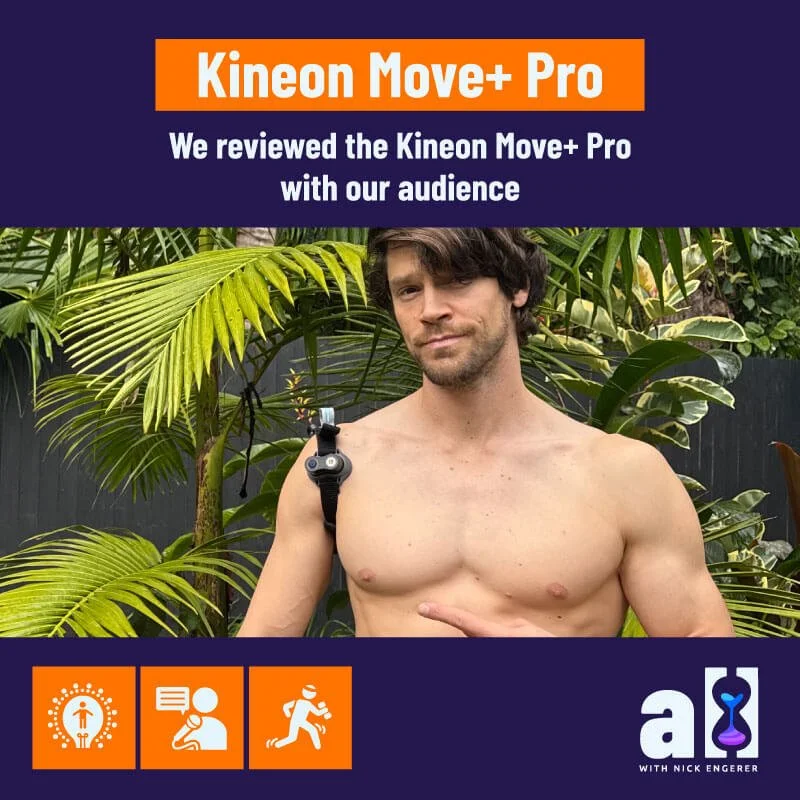Prerequisites to micronutrient testing - What to do and why
Micronutrient testing is a powerful tool for the self-quantified
Hello blood draw - may know? What is in you?
Micronutrient testing is a powerful tool, in this post you’ll learn:
How micronutrient testing can reveal critical levels of certain nutrients
What you need to do prior to getting a micronutrient test to ensure it is effective
Why we recommend tracking micronutrient intake with Cronometer prior to your test
How using Cronometer could mean you don’t actually need to pay for micronutrient testing (it is expensive!)
Why tracking your supplement intake prior to a micronutrient test is MUST have
Micronutrient testing can reveal critical health information
This is illustrated perfectly by the results of my own micronutrient test - which revealed I was critically low in three important micronutrients - an amino acid (Glutamine), a mineral (Chromium) and a vitamin (K1).
The first of these two could be traced back to my athletic level of physical activity, whereby my glutamine intake and reserves were slurped up by my muscle recovery and the chromium which was lost through my sweat and is only present in relatively low amounts in dietary intake.
In this post, I want to guide you a little deeper into the topic and share what I’ve learned from my first round of micronutrient testing, so as to guide your own use of this powerful blood test.
Making Your micronutrient test actionable takes a plan
A key theme of A Longer Life is diving through the many points of data available to measure your wellness, and determine which of these are actionable, how and why.
With my previous anecdote of micronutrient testing revealing a critical lack of important nutrients in my serum and blood cells, it is clear that in the case of deficiency, the actionable path is fairly straightforward.
I immediately began a supplementation plan for these three micronutrients, and noticed sudden improvements to my health.
Notably with glutamine supplementation, I observed a noticeable strengthening of my gut resilience.
However, these three data points are only a small subsample of the information that one will glean after completing a micronutrient test.
How can we ensure that we have decision making capacity around these other data points?
The straightforward answer is we need to have a plan, and that means we’ll require preparation prior to completing the test.
I’ll use an illustration from my own micronutrient testing results, before I dive into the two key elements of this plan, which are:
1) detailed dietary tracking with Cronometer
and
2) having a complete record of your supplement routine prior to your first micronutrient test.
 |
Illustration - Results from my micronutrient test at NextHealth
When I gave 15 vials of blood at NextHealth in November 2019, I knew I could expect an impressive collection of biometric data.
But of the several blood test products I undertook, the results of the micronutrient test were the most daunting.
Firstly, there are two main categories of data presented for each micronutrient
The serum level, which represents the amount of each micronutrient present in my blood serum directly. This component is inherently more variable, as the process of micronutrients entering the bloodstream and being taken up by the various metabolic pathways in the body is quite dynamic. This value can very much be thought of as a ‘snapshot’ of this quickly changing process.
Then there is the amount of micronutrient present within the actual cell, which is more steady-state, and can better represents the long-term average concentration of a micronutrient. In most micronutrient tests, these are sampled in the White Blood Cell (WBC) and/or Red Blood Cell (RBC), depending on which is most representative of a given micronutrient. RBC lifetimes are on the order of 100-120 days (3-4 months) whereas WBC lifetimes are measured on the order of 10-14 days (1 to 2 weeks).
Here are the results of my vitamin panel:
As you can see, we have a concentration of the micronutrient in both categories, along with a reference range provided by the laboratory (Vibrant America). We won’t be able to dive into the basis of the reference ranges in this post, but suffice it to say they are based off a combination of population statistics and published studies.
Why dietary intake tracking prior to micronutrient testing is important
Now, let’s consider for minute that one has taken their micronutrient test and was blind to their dietary intake, had not kept a good record of their supplementation routine. What actions can they take based on this result? As you can see, with the exception of Vitamin K1 serum levels, I was ‘green’ across the board.
The answer on what is actionable is limited without this information. Based on ‘green’ results, one might decide to ‘stay the course’ on their current lifestyle choices.
However, for self-experimenters like yourself, who are likely interested in self-optimisation (that’s why you read this blog after all, no?), this is an unsatisfying result. Never mind the fact that any deviation on dietary intake could result in sudden withdrawal of a source of micronutrient near the low end of the reference range.
Take for example my Vitamin A or Vitamin K2 intake - should I suddenly discontinue my penchant for sweet potatoes (a rich source of beta carotene, a form of Vitamin A) in favour of another carbohydrate (e.g. a white potato), I could perhaps drop out of the reference range within a matter of a few weeks.
But this would likely escape my detection if I were not tracking my diet! So, onto pre-requisite #1!
Tracking dietary intake of micronutrients with Cronometer (Pre-requisite #1)
This illustration, along with my sage advice aimed at you spending your self-quantification dollars wisely, strongly suggests that you track your dietary intake for at least 3 months prior to your micronutrient test.
This recommendation of ‘3 months’ is based on the expected RBC lifecycle, and is made from a first principles viewpoint (there simply isn’t a robust source of peer reviewed science on this topic).
For this purpose, I suggest you us cronometer. Cronometer is a detailed dietary tracking app which offers the key advantage of providing micronutrient tracking (sorry MyFitnessPal).
Vitamin micronutrient tracking information for myself this week. I’m avoiding eggs at the moment and so I am supplementing choline! Looks like it is time to take it! And the B-Vitamin complex too!
Using Cronometer is absolutely essential for making your micronutrient testing outcomes actionable.
You simply won’t know what to change or keep the same, in order to achieve the outcome you desire for any given micronutrient without this information.
This tracking will come with the added benefit of identifying potential areas of deficiency in your diet in the first instance, prior to the micronutrient test.
Cronometer is the only dietary tracking app which enables detailed tracking of micronutrients.
In fact, using Cronometer over a few weeks or months is likely to highlight which micronutrients you are likely deficient in.
Given that the app is FREE, it could save you several hundred dollars and give you the answer you’re looking for (Am I deficient in a given micronutrient).
The simple fact is - if you’re not including a micronutrient at recommended levels, the chances of you being deficient in that micronutrient skyrocket.
Going back to my personal example above - tracking my dietary intake of chromium revealed low levels in the foods I was eating.
I could have seen this ahead of time with Cronometer!
Micronutrient Supplementation tracking is a must! (Pre-requisite #2)
Just as you must track your micronutrient intake from your diet, the same is also true of any supplements that you may be taking. (Hey, I’d know - I take a few myself).
From the perspective of my first point, this seems, well, bloody obvious (pun intended?)! But, I speak from experience. I was still settling into a solid supplementation routine leading up to my micronutrient test, and did not keep a high quality record (oops! don’t be like Nick!).
Was I taking the 15mg of zinc or had I bumped it to 22mg by then And if so, when? When did I change that vitamin D supplement in favour of one that included K2 in the formulation, again?
The truth is, I didn’t have the answers to these details, and when it comes to making your micronutrient test actionable - details are important!! I found out the hard way when trying to make my own micronutrient test actionable. I thought I knew what I was taking, but when it came down to the details - I didn’t have the records I needed.
Keep a record of your supplements, using an app or a simple spreadsheet. Keep track of the supplement name, the concentration of micronutrient, its form, the timing of your dosage and the start/end date + frequency (e.g. every other day? once per week?).
READY TO TEST YOUR MICRONUTRIENT STATUS?
We’ve found three valuable DIY options for you! No doctor required!
ULTAWELLNESS (USA)
Budget Option (25% of the cost)
HEALTHLABS USA)
I-SCREEN (AUSTRALIA)
FDA & TGA DISCLAIMER
This information is intended for educational purposes only and is not meant to substitute for medical care or to prescribe treatment for any specific health condition. These blog posts are not intended to diagnose, treat, cure or prevent any disease, and only may become actionable through consultation with a medical professional.














